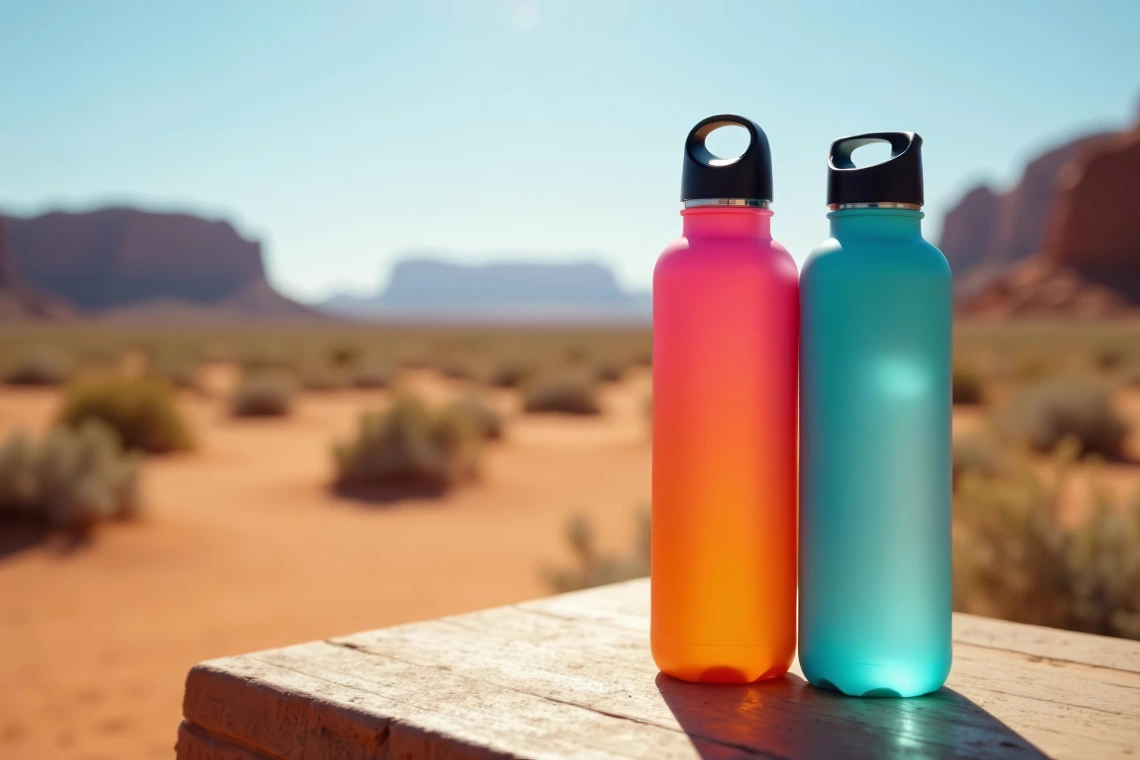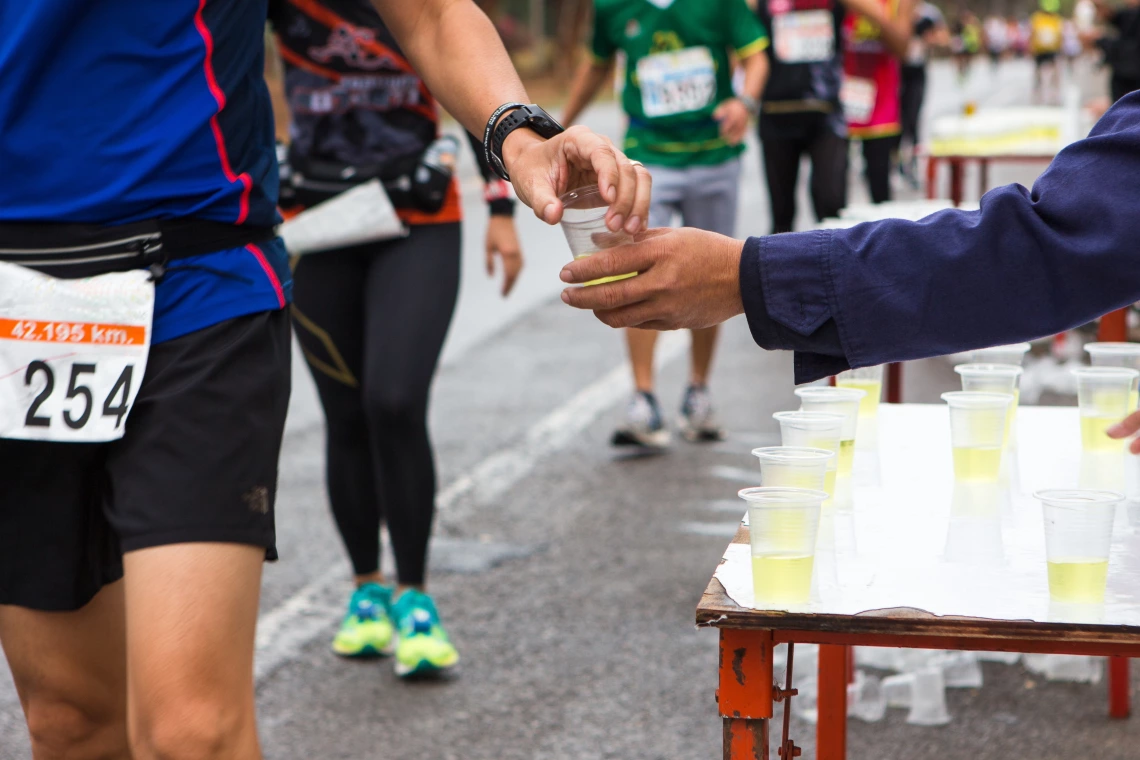Hydration 101: Learn how to sip smarter

You’ve probably heard it a hundred times: Drink more water! It’s a constant refrain, repeated by everyone from social media influencers to healthcare providers – especially during the hottest months of summer.
We all know it’s important to stay hydrated – after all, our bodies are mostly water. All of our cells need water to work, and it’s essential for biological processes like circulating blood, digesting food and removing waste, and regulating body temperature. Dehydration can lead to all sorts of health issues, from headaches and fatigue to kidney damage and seizures. Chronic dehydration has been linked to an increased risk of developing chronic illnesses like heart failure and dementia in older adults.
But how much do we really need to drink, and how often? Does your morning coffee count against you? And what about water tracking apps and hydration aids – should we all be using them?
We talked with two professors from the School of Nutritional Sciences and Wellness (SNSW) to help us separate hydration facts from fiction.
How much water is enough?
The conventional wisdom has long been that everyone should aim to drink eight, 8-ounce glasses of water per day. That’s not a bad place to start, but according to Veronica Mullins, a registered dietitian and the director of SNSW’s Nutrition and Human Performance program, it shouldn’t be a rule so much as a guideline.
“The Dietary Reference Intakes recommend 3.7 liters (around 125 ounces) of water per day for men, and 2.7 liters (91 ounces) per day for women, not including extra fluid that may be needed to replace losses during exercise,” she said. “But not everyone has the same fluid intake requirements. Age, body size, muscle mass, level of physical activity, temperature of the environment – those can all influence how much water an individual needs.”
Alexandra Samarron Longorio, another registered dietitian and an assistant professor of practice at SNSW, says that the best way to tell if you’re getting enough water is to listen to your body.
“If you’re thirsty, you need to drink water,” she said. “If you aren’t thirsty, you don’t need to drink water.”
Depending on thirst cues is enough for most people, but it can fall short for adults older than 60, or for people with health conditions that might decrease their sensitivity to thirst. Some medications can also cause a decreased thirst sensitivity.
“Some research suggests that the thirst signaling in our brains diminishes with aging,” she said. “So older adults might not feel thirsty and not drink enough fluids, putting them at a higher risk for dehydration. In that case, I’d recommend being more intentional about drinking water regularly throughout the day.”
Do caffeinated drinks count towards your daily intake?
The short answer is yes – probably.
“Caffeine is a diuretic, meaning it will lead to more water loss through urination than a beverage that doesn’t contain caffeine,” Mullins said. “But it is not a net negative. Drinking a moderate amount of coffee or tea (1-2 cups per day) will still provide fluids and can count towards daily fluid intake.”
Samarron Longorio explained that for some people, caffeine can also irritate the bladder, which would result in more frequent trips to the bathroom. She also cautioned that caffeine – and its potentially dehydrating effects – can be found in more than just coffee and tea.
“Energy drinks, for example, tend to have 80 to 150 milligrams of caffeine per serving,” she said. “If you’re concerned about how caffeine may be impacting your hydration, do a self-assessment. If your total daily caffeine intake is more than 400 milligrams, you may start to see that net negative effect.”

Should I be using hydration aids?
Hydration aids can be helpful if you’re going to be sweating a lot – because you’re spending a lot of time in the heat or doing a long workout, for example.
“Recreational exercisers who are working out for an hour or less can adequately replace fluid losses with just water,” Mullins said. “Hydration aids usually include electrolytes like sodium, potassium and calcium, which can be lost during periods of heavy sweating.”
She added that sports drinks can also be helpful in some situations.
“Sports drinks are beneficial for athletes exercising for more than 90 minutes or athletes who exercise at very high intensities,” she explained. “They provide calories from simple carbohydrates, along with a small amount of sodium meant to increase the absorption of the sugars into the blood. They can help to prevent depletion of glycogen (carbohydrates used for energy) stores in the muscle.”
Sports drinks and hydration aids aren’t the only way to help rebalance electrolytes after intense exercise, though. Samarron Longorio pointed out that eating salty snacks during and after prolonged exercise can perform a similar function.
“There was a study on ultra-marathon runners where they had access to food stations as well as hydration stations along the route,” she said. “They encouraged the runners to listen to their cravings and let that guide what they consumed. At the end of the study, they realized that the runners were able to keep their electrolytes in balance just by following their bodies’ signals.”
Can I eat to increase my hydration?
Your daily water intake shouldn’t just come from the contents of your water bottle. According to Mullins, you should aim to get about 20% of your water from hydrating foods.
“Along with fluids, consuming high-water content foods like soups, fruits and veggies throughout the day is the best way to stay hydrated,” she said.
Though all fruits and veggies will count towards your hydration, some have a higher water content than others. Samarron Longorio pointed to citrus fruits, melon, cucumber and celery as especially hydrating foods.
Is it possible to drink too much water?
It is. Overhydration is very rare, but it can happen, and when it does, it can cause a dangerous condition called hyponatremia.
“Hyponatremia can occur when someone has hydrated to the point that their sodium levels become diluted,” Samarron Longorio explained. “It can result in headaches, nausea, vomiting, fatigue or disorientation – even seizures or coma.”
Ultimately, it’s important to aim for balance when it comes to hydration: not too little water, and not too much.
“It’s important to listen to your body and pay attention to any cravings you might have,” she said. “We have these thirst and hunger cues for a reason. Most of the time, our bodies are good at telling us what we need.”
